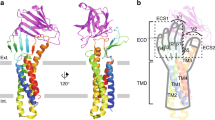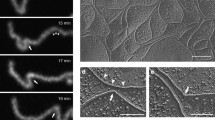Abstract
The interaction between tight junction proteins occludin and zona occludens protein 1 (ZO-1) was clarified. The sequence cc1 within the hinge region of ZO-1, connecting its SH3 and GuK domains, was identified as a new association site for the occludin C-terminus, core binding area GLRSSKRNLRKSR (mouse ZO-1606-618). Occludin also bound to the sequence H2 within GuK, core area HKLRKNNH (ZO-1759-766). In occludin, the binding core was ELSRLDKELDDYREESEEY (mouse occludin455-473). Helicity of the sequences was suggested by circular dichroism. Because basic residues in ZO-1, acidic residues in occludin (underlined), coiled-coil helix-forming leucine heptad motifs (bold) in occludin and, probably, in cc1 were essential, we conclude that interactions were both helical and ionic. Moreover, the GuK domain bound other GuK molecules, suggesting oligomerization of ZO-1. Generally, the assumption is supported that the SH3-hinge-GuK region represents a functional and regulatory unit in ZO-1 forming a multiprotein tight junction complex with occludin.
Similar content being viewed by others
Author information
Authors and Affiliations
Corresponding author
Additional information
Received 12 January 2004; received after revision 23 February 2004; accepted 31 March 2004
Rights and permissions
About this article
Cite this article
Schmidt, A., Utepbergenov, D.I., Mueller, S.L. et al. Occludin binds to the SH3-hinge-GuK unit of zonula occludens protein 1: potential mechanism of tight junction regulation. CMLS, Cell. Mol. Life Sci. 61, 1354–1365 (2004). https://doi.org/10.1007/s00018-004-4010-6
Issue Date:
DOI: https://doi.org/10.1007/s00018-004-4010-6




